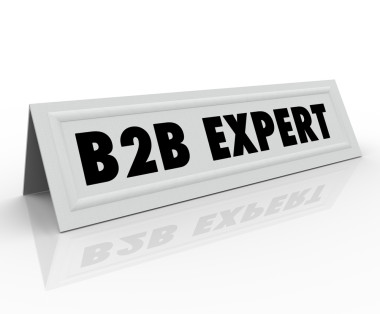Any conference or trade show that’s worth its weight will restrict speakers from promoting their business or product. They also don’t have quotas or speaker requirements, besides being the best and brightest in your niche/field or industry. That’s why Affiliate Summit, Pubcon, and others do so well.
You get lots of content from people who actually do the work, and not a lot of self promotion. So, if speakers at these shows cannot self promote on stage, how do they build business with their presentations?
If you are considering becoming a regular speaker at events in your industry, there are a lot of factors you need to consider, including which shows to speak at, what you are an expert in, what is promotional versus non promotional, and what to do if you are on a panel or giving a solo presentation.
Below are some tips I’ve learned over the years to first determine if the conference or event is a good fit for you, and then build business from your presentation.

What You Need to Know to Build Business With Public Speaking
Below is a list of what you should consider before you speak. It will help you to avoid certain issues, know what goals to set up for yourself from the session, and help you put together your presentation.

Evaluating a Show
When looking at trade shows accepting speaker proposals, think about who the attendees are and what your goals by reaching out to them. If you are speaking to a panel of peers, chances are you won’t get clients, but you can still grow your company through backlinks.
To set up goals for the presentation, ask questions like:
- Do you want backlinks and a PR list?
- Do you want clients and new business?
- Do you want new partners and followers to build your personal or company’s reputation?
Even if the show doesn’t result in new business for your company, you could meet bloggers, webmasters, journalists, and contributors to niche sites. Those could be important contacts who review your session and build high quality links to your company. Sometimes those reviews can also result in leads as their readers discover the review.
Other times, attendees may quote you or share slides on social media, which can help build your following. Look through the attendees and try to figure out if your session can attract the right people to help boost your business, even if the boost comes at a later date.
Are You an Expert or Equal to Your Panelists?
 This shouldn’t terrify you. If it does, don’t speak. People pay a ton of money to go to high-quality conferences. That is why someone in the audience will likely call you out if you end up not being an expert. The people on who give solid and actionable items are going to stand out and build business once a session is over, because they have proven they know their stuff.
This shouldn’t terrify you. If it does, don’t speak. People pay a ton of money to go to high-quality conferences. That is why someone in the audience will likely call you out if you end up not being an expert. The people on who give solid and actionable items are going to stand out and build business once a session is over, because they have proven they know their stuff.
The people who give fluff, repeat what other panelists say, or don’t know any of the subject matter will stand out – and not in a good way. The trick is to not speak unless it is a topic you are an expert.
There are always people in an audience who will disagree with you. Some will challenge you and some will remain quiet, but may give feedback to the show owners. If people decide to challenge what you’re saying, get ready because even though they may be hecklers, their goal is to call you out for not knowing the subject matter – and your job is to prove you are.
Being on a stage for the first time can turn a normally confident person into a nervous one. Everyone gets stage fright and messes up, just focus on making sure you know your stuff before you get on a stage. Research public speaking skills and practice your speech several times before you actually give it at the event.

What is Promotional Versus Non-Promotional?
Sometimes there is a fine line promotional and non-promotional. You don’t want to pitch your company because you end up sounding like a salesman and turn off an audience. At the same time, you do want to be able to provide your information and show you and your company/services can benefit the audience. That’s where you have to figure out what is promotional and what is spammy.
Your Introduction
When you introduce yourself, or the moderator does, include your name, city, and your company. It’s ok to say what your company’s core focuses are, but don’t go into detail. If you do SEO, say you do SEO and maybe something more specific, such as “We do SEO from a link building and content strategy standpoint for small- to mid-size companies.” It lets the audience know what your core competency is and who your target is, but it doesn’t pitch them.
Once the audience knows what you are an expert on, they can figure out what the right questions to ask you are. This is key to building business from a session. Look at the topic and make sure it matches your own skill set, while also opening up space for the audience to be able to ask the right questions so you can help them.

Case Studies
Using a case study to show how your products or services helped companies is almost always beneficial. The trick is to remember to talk about how the client or company was able to grow due to your help. Also, be sure to tell the audience how they can mimic the strategies you used to grow their own company, which is why they are there to begin with.
Another important part of a successful case study is using screenshots and slides with the real life examples and actual data. This is where you can show off the benefits of your service with actual results.
Slides
Your slides are almost as important as what you say. Many shows will upload them to SlideShare, where they can be indexed in Google. Audience members may take screenshots and share them on social media or include them in blog posts – and they are what people use to take notes during your presentation.
Double-check the following things before you submit your presentation.
- Use the conference template: This is important if the event requires it. Although it’s fun to stand out with a cool design, you don’t want to agitate your fellow speakers or anger the conference owners. If they require you use their template, do not modify it, but you can be creative with the layouts of the content and images within the space to help yourself stand out.
- Your contact information on the opening and closing slides: Don’t forget to include an email address or contact information on the opening and closing slides. If you did a good job and delivered great content, having a way to reach you through your email or a contact form at the end is a great way for shy listeners to find you. Many will take pictures so they have your contact info, especially if they are too shy to approach you when you finish.
- Add your Twitter handle to your slides, especially ones with great content: Because slides can be shared and stored, make sure you have your twitter handle on each one. As people share your slides, they may call you out by using the handle helping you to track who was there and can help you know who to thank. As the audience shares while you’re speaking, having your handle available will help them to know who to call out as well. This will help people reach you with more questions, giving you a chance to close a new deal or find a new client.
Mentioning Competitors
Although your boss or CEO may not like it, don’t be company-centric. It’s okay to mention competing products and tools. This shows you aren’t biased and are willing to be open and honest. I mention competitors’ firms and tips I’ve learned from them all the time when I speak. It helps to build trust and credibility with the attendees.
Conclusion
When you first start speaking, you need to know how to pick a show that can build business and how to properly present yourself. Think about the attendees and how they can benefit you and your company. Then, evaluate how to tie in your own skill sets with the topic of the presentation so the audience knows what questions to ask based on your expertise. Last, remember to include ways to contact you so new clients and potential backlinks can find you.
Image Credits
Featured Image: David Crockett via Shutterstock
Image #1: Sabelskaya via Shutterstock
Image #2: docstockmedia via Shutterstock
Image #3: iQoncept via Shutterstock
Image #4: Bplanet via Shutterstock
Image #5: Zurbanov Alexei via Shutterstock





